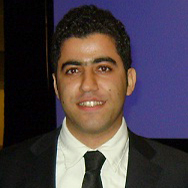Global Connect: Digital Ecosystem Architecture
By Susan Hyon Parker, Carnegie Mellon Open Learning
IEEE Internet Initiative eNewsletter, September 2016
The digital ecosystem is driven by innovation, productivity and service expansion in both public and private sectors. This ecosystem covers various geographic areas, cultures and socioeconomic backgrounds. Increasing digital services to meet the needs of global access and adoption has been a viable challenge. On a macrocosmic scale, there is plausibility that technological changes can make societal impacts slower. This reduction in growth would be a decomposer and creates cultural barriers to entry that impedes public access to services. Furthermore, rural areas present different challenges and new ways of thinking to meet the demand for services in geographic locations for the unconnected and unbanked.
The demand for expanding services in broadband and mobile connectivity has been demonstrated by the need for localized content and community engagement to address these issues. India is a good example of a digital divide area where localized content would be beneficial as it embodies approximately 1.2 Billion people who speak 22 different languages [1]. The reduction of barriers to the digital ecosystem can empower individuals and organizations. The income and geography barriers require a holistic approach to infrastructure to bridge the technologies (Singh, 2003) [2] by strengthening regulation and fostering inclusive public access and engagement.
Best practices may not necessarily translate across cultures. Cultural barriers occur at various touch points within the ecosystem and leadership in one area of expertise or knowledge base may not be cohesive in another area of the ecosystem. A successful Internet café launched in Malaysia that provides free 1 hour community access each day for students and seniors. (Nordrom, 2016) [3] Adapting workers’ skills to meet the needs of the digital economy to produce digital dividends will require new approaches to education and collaboration to accelerate growth and expansion of services to promote decent work and economic growth.
Furthermore, regulatory frameworks must be able to incentivize and empower individuals and their communities with resources that enable them with appropriate training and return on investment. The Dig Once Initiative (Global Connect, 2016) [4] is a resource that assists with sustainable growth of technological advancement and labor development. Rural areas will require expansive infrastructure to bring underserved communities the same level of empowerment and engagement that is represented within the urban infrastructure landscape. The expansion of these localized deployments and increased adoption rates will encourage competition and be inclusive of all stakeholders.
It will be critical to balance both supply side and demand side policies to effectuate universality of availability, accessibility and affordability. The collaborative efforts of policy makers and Internet governance advocates has played a pivotal role in effectuating advancement of solutions. To promote open and safe Internet use will require advances towards cybersecurity and public awareness that keeps community engagement collaborative and transparent. The anchor institutions at public access facilities and educational organizations who are involved with Global Connect have taken next steps to provide a learning environment, accelerate growth and increase adoption by communities.
The digital ecosystem provides a connected collaboration economy that will allow for expansion of services in non-traditional areas such as ecological intelligence and ecological economics. These communities will thrive and accelerate as expansive offerings in the markets for which they serve producing products and service offerings in both linear and non-linear fashion. Communal experiences in these communities will offer horizontal approaches that will produce incremental levels of thinking that will contribute to an overall exponential understanding of goods and services. An ecosystem approach provides holistic representation of communal resources as opposed to the traditional method of “front-end” and “back-end” entropy thus moving towards a horizon of effective permutations.
The digital accountability of data sharing information will be critical in maintaining a cohesive ecosystem. Responsible consumption and production ensures that institutions are held accountable. An open and transparent collaborative environment with regulators, standards policy makers and government bodies is critical in the success of the connection supply chain. In order to supply affordable access and connectivity; domestic firms and individual economies who use the Internet for both domestic and international competition will need checks and balances to keep the digital ecosystem thriving. The ecosystem must embrace risk management that is fungible and can maintain confidence to all stakeholders with distinction.
The need for responsible and renewable energy consumption as a part of institutional accountability is warranted to provide connectivity with strides towards sustainable resources that promote Smart Cities, Smart Grids, Advanced Metering and Home Area Networks such as those in use by off-grid sharing communities and those in ASEAN areas. The connection and collaboration of these emerging technologies will require different approaches to energy access where regular grid infrastructure can be improved and expanded. Exploration for alternative sources is ongoing and requires multi-stakeholder involvement for continual expansion and growth. The scientific evolution of these alternative and renewable resources is communicative of exponential product life cycle (PLM) predictability.
The digital ecosystem has the possibility to connect the next billion. It is a thriving community with exponential growth and advancement towards bringing the impossible closer together to make it possible.
References:
[1] Amy Nordum, "3 Way To Bridge The Digital Divide", IEEE Spectrum, 14 April 2016.
[2] Seema Singh, "India's Homegrown System for "Fixed Wireless" Has Legs", IEEE Spectrum, July 2003
[3] Amy Nordrum, "Malaysia Bets on Internet Access and Public Wi-Fi for Its Global Debut", IEEE Spectrum, June 2016.
[4] "Dig Once: A How-To Guide", Global Connect Stakeholders: Advancing Solutions April 2016. https://share.america.gov/wp-content/uploads/2016/04/6.-GCI-Dig-Once.pdf
 Susan Hyon Parker
Susan Hyon Parker
Susan Hyon Parker received her B.S in Computer Science from Robert Morris University. She received her engineering education jointly through Carnegie Mellon University and Massachusetts Institute of Technology. She is currently pursuing her PhD in Nanotechnology. Presently, she is a visiting student at Oxford University.
She has been an instructor with the Carnegie Mellon Open Learning Initiative since its inception in 2001. She is an active member of the IEEE Internet Initiative, IEEE Nanotechnology, IEEE Cybersecurity, IEEE Smart Grid Power & Energy Society. She has been a contributor to the IEEE ETAP Forum and Conferences and has been reviewing papers for the National Academy of Engineering - Engineer Girl Essay Contest.
Her research interests include Sensor and Ad hoc networks, Robotics, Artificial Intelligence, Cyber Physical Systems, Vehicular Communications, Graphene, Renewable Energy, IoT and Future Internet as well as Propulsion and Aerospace Systems.
Editor:
 Dr. Reza Malekian
Dr. Reza Malekian
Dr. Reza Malekian (M'12) is currently a Senior Lecturer with the Department of Electrical, Electronic, and Computer Engineering, University of Pretoria, Pretoria, South Africa and an Assistant Professor (attache) in the Departamento de Ingeniería Informática, Universidad de Santiago de Chile, Chile. His research is focused on Internet of Things, mobile Internet, Advanced sensor networks and mobile communications under industry and government funding.
Dr. Malekian is also a Chartered Engineer registered with the Engineering Council of UK, a professional member of the British Computer Society (BCS), and a member of the IEEE. He is an associate editor for the IEEE Internet of Things Journal as well as lead guest editor for a special issue titled “Internet of Things and Sensors Technologies for Intelligent Transportation Systems” in IEEE Transactions on Intelligent Transportation Systems
Article Contributions Welcomed
If you wish to have an internet policy related article considered for publication, please contact the Managing Editor of Technology Policy and Ethics IEEE Future Directions Newsletter.
Past Issues
IEEE Internet Policy Newsletter Editorial Board
Dr. Ali Kashif Bashir, Interim Editor-in- Chief
Dr. Syed Hassan Ahmed
Dr. Mudassar Ahmad
Dr. Onur Alparslan
Dr. Muhammad Bilal
Dr. Syed Ahmad Chan Bukhari
Dr. Ankur Chattopadhyay
Dr. Junaid Chaudhry
Dr. Waleed Ejaz
Dr. Yasir Faheem
Dr. Prasun Ghosal
Dr. Tahir Hameed
Dr. Y. Sinan Hanay
Dr. Shagufta Henna
Dr. Fatima Hussain
Dr. Rasheed Hussain
Dr. Saman Iftikhar
Dr. Stephan Jones
Dr. Mohammad Saud Khan
Olga Kiconco
Dr. Jay Ramesh Merja
Dr. Mubashir Husain Rehmani
Dr. Hafiz Maher Ali Zeeshan
About: This newsletter features technical, policy, social, governmental, but not political commentary related to the internet. Its contents reflect the viewpoints of the authors and do not necessarily reflect the positions and views of IEEE. It is published by the IEEE Internet Initiative to enhance knowledge and promote discussion of the issues addressed.


